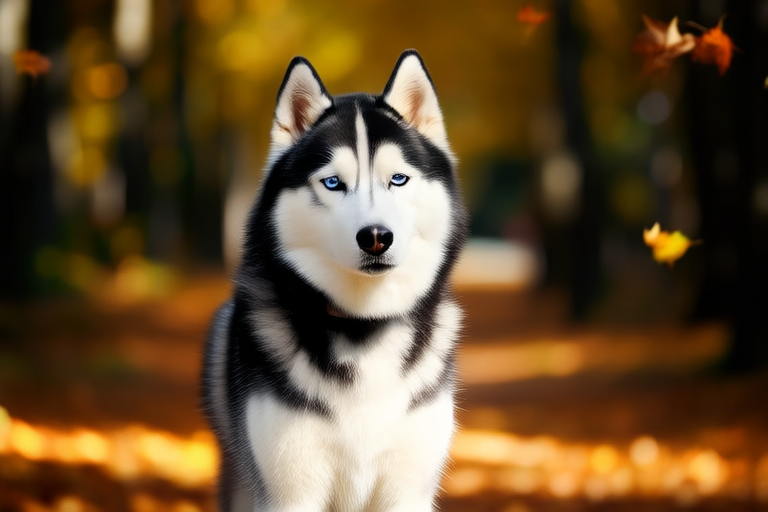Siberian Huskies: The Ultimate Guide for New Owners
Welcome to your ultimate guide on Siberian Huskies! If you’re considering adopting or have recently welcomed a Siberian Husky into your home, this comprehensive guide will provide you with all the essential information you need to ensure a happy, healthy, and well-adjusted life for your furry friend.
Breed Characteristics
Siberian Huskies are medium-sized dogs known for their striking blue eyes and thick, beautiful coats. Originating from Siberia, these dogs were bred by the Chukchi people as sled dogs. They are incredibly intelligent, independent, and full of energy. Huskies are highly social animals that thrive in packs, which means they often enjoy the company of other dogs and humans alike. Their natural instincts include running long distances and working alongside others, making them excellent companions for active families. However, their strong-willed nature can sometimes pose challenges when it comes to obedience training.
Exercise Needs
Huskies require plenty of physical activity due to their high energy levels and endurance. Regular exercise helps keep them fit and mentally stimulated. Aim for at least two hours of exercise daily, incorporating activities like running, hiking, and playing fetch. Agility courses and dog sports such as mushing can also be great outlets for their energy. It’s important to note that Huskies have a tendency to roam if given the chance, so always keep them on a leash during walks and consider fencing your yard.
Dietary Requirements
A balanced diet is crucial for maintaining a Husky’s health and vitality. High-quality dog food rich in protein and fat is recommended, as these nutrients help fuel their active lifestyle. Consult with your veterinarian to determine the appropriate amount of food based on your Husky’s age, weight, and activity level. Avoid overfeeding, as Huskies can become overweight if their caloric intake exceeds their energy expenditure. Fresh water should always be available, especially after vigorous exercise.
Grooming Tips
Huskies have a double coat that sheds heavily twice a year during seasonal changes. Regular brushing—ideally several times a week—can help manage shedding and prevent matting. Use a slicker brush to remove loose hair and distribute natural oils throughout the coat. Bathing should only be done when necessary, as frequent washing can strip away essential oils. Additionally, pay attention to dental hygiene by brushing your Husky’s teeth regularly and providing chew toys to promote good oral health.
Common Health Issues
While generally healthy, Huskies may be prone to certain genetic conditions. Hip dysplasia, cataracts, and progressive retinal atrophy are among the most common concerns. Regular veterinary check-ups can help catch potential issues early. Maintaining a healthy weight through proper diet and exercise is vital in preventing joint problems. Early intervention and consistent care can significantly improve your Husky’s quality of life.
Training Techniques
Training a Husky requires patience, consistency, and positive reinforcement. These dogs respond best to reward-based methods rather than harsh corrections. Start training sessions when your Husky is young to establish good habits early on. Focus on basic commands such as sit, stay, come, and heel. Keep training sessions short but frequent to maintain your Husky’s interest. Incorporating games and rewards can make learning fun and engaging for both you and your pet.
Socialization Advice
Socializing your Husky from an early age is key to ensuring they grow up to be well-mannered adults. Expose them to various environments, people, and other animals to build confidence and reduce fearfulness. Puppy classes offer structured opportunities for social interaction under professional guidance. Always supervise interactions between your Husky and strangers or unfamiliar pets to ensure safety and prevent aggressive behavior.
Housing Recommendations
Huskies adapt well to different living situations but prefer cooler climates due to their thick coats. If you live in a hot environment, take extra precautions to protect your Husky from overheating. Provide ample shade, cool surfaces, and access to fresh water during outdoor activities. Indoor living spaces should be spacious enough to accommodate their energetic nature. Consider installing baby gates or fences to create safe areas where your Husky can run and play without risking escape.
In conclusion, owning a Siberian Husky can be a rewarding experience filled with joy and adventure. By understanding their unique traits and providing them with the care they need, you’ll be able to form a strong bond with your loyal companion. Remember, every dog is different, so tailor your approach based on your individual Husky’s personality and needs. With love, patience, and commitment, you’ll enjoy many years of companionship together.
